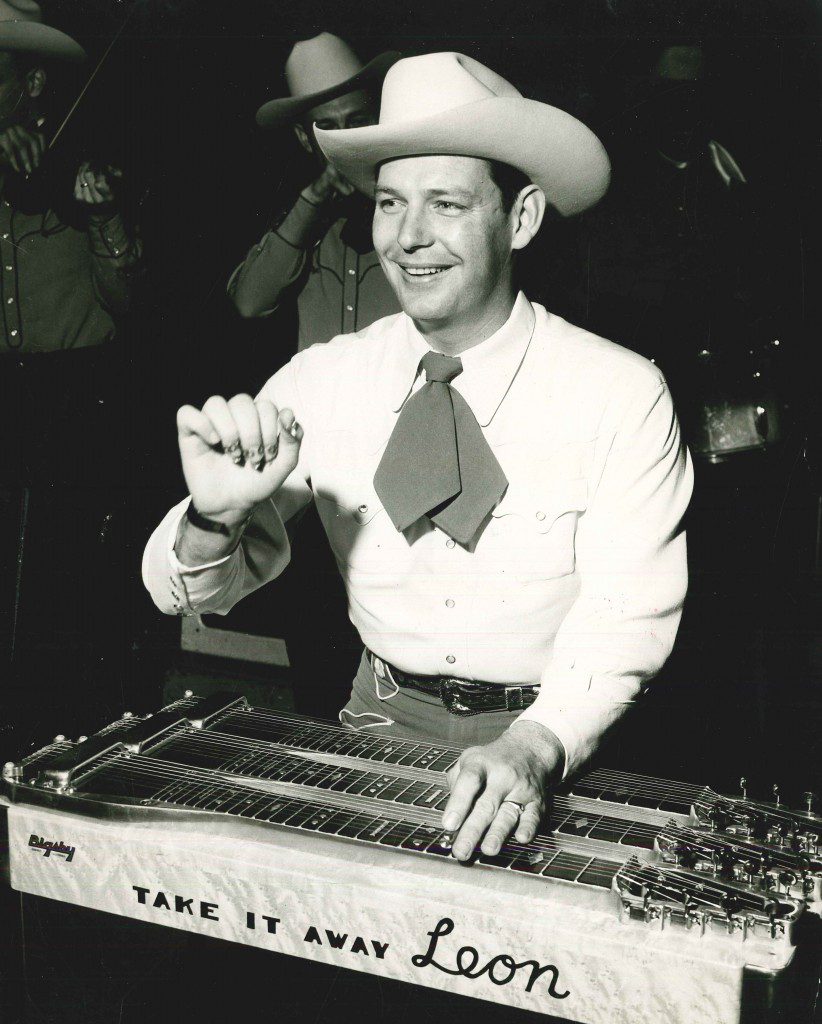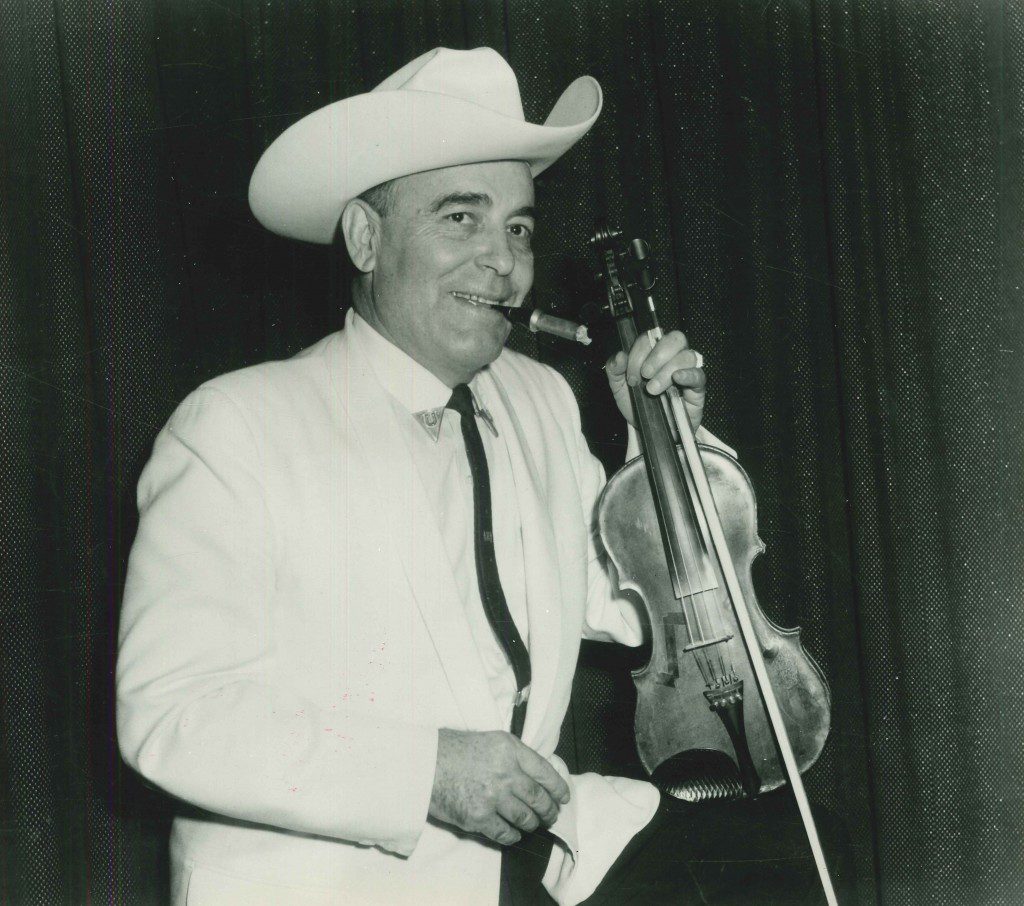
‘Time Changes Everything’
[pullquote] “Western swing is the first cousin to Dixieland jazz, second cousin to big-band swing, third cousin to the blues, and fourth cousin to country, with a little Mexican music mixed in. So there’s a little something everyone will enjoy.” – Truitt Cunningham, western-swing vocalist and bandleader[/pullquote]
There’s three things to remember about western swing.
1. It’s always changing, and it has been since Wills brought it to Tulsa.
Starting out as the kind of fiddle band he knew from the ranch house dances of his youth – and retaining its emphasis on the fiddle as lead instrument – western swing evolved into a form of music that featured jazz improvisation with an emphasis on stringed rather than brass and reed instruments over a dance beat associated with country (or, as it was called then, “hillbilly” or “folk”) music, largely because of a predominantly rural and blue-collar fanbase. Most of the residents of Oklahoma and the rest of the southwest were not citified, and both the music and the lyrics of western swing often reflected the rustic experiences of Wills – who’d picked cotton and sharecropped, among other jobs – along with many of his musicians and fans.
But the Texas Playboys didn’t stop there. The band would also incorporate the day’s big-band hits into the Playboys’ versions of African-American blues numbers. (It’s said that Wills’ all-time favorite vocalist was the famed blues singer Bessie Smith.) As Cunningham noted, western swing has a lot of relatives, and the musicians who played it needed to be acquainted with them all.
In the crucible of Cain’s Ballroom, Wills kept mixing different musical elements, always tweaking and testing his formulas. In 1935, for instance, he hired a Dixieland-jazz player named William “Smokey” Dacus, making the Texas Playboys the first hillbilly-music act to have a drummer. From the beginning, he experimented with combinations of reed and brass and stringed instruments; his bands of the early ‘40s featured horn sections to rival any big pop band. Wills never stopped tinkering with his sound, and that sense of experimentation and discovery continues today in contemporary western-swing bands.
2. Western swing wasn’t actually called “western swing” until about the mid-1940s.
The story goes that someone – Mayo always maintained it was western-movie star Roy Rogers – coined the term to describe Spade Cooley’s West Coast band. Cooley, a native Oklahoman and one of the many bandleaders who came along in the wake of Bob Wills, not only had horns in his outfit, but also a harp. At the time, big-band leader Benny Goodman was known as the King of Swing; to distinguish Cooley’s and Wills’ kind of swing music, Cooley was dubbed the King of Western Swing.
3. Some, mostly Texas-based, music historians and musicians insist that a vocalist named Milton Brown was the actual father of western swing.
It’s true that Brown and Wills had both been members of the seminal Wills Fiddle Band, precursor of the Light Crust Doughboys. It’s also true that Brown, irked by Pappy O’Daniel’s refusal to let the Doughboys play dances, left the group before Wills and cut a lot of swinging and innovative sides with his own band, the Musical Brownies.
So yes – Milton Brown and Fort Worth could’ve been just as big a factor in the history of western swing as Bob Wills and Tulsa. Unfortunately, Brown’s potential was snuffed out, along with his life, following an auto accident in the spring of 1936. By then, Wills had been based in Tulsa for more than two years.
























